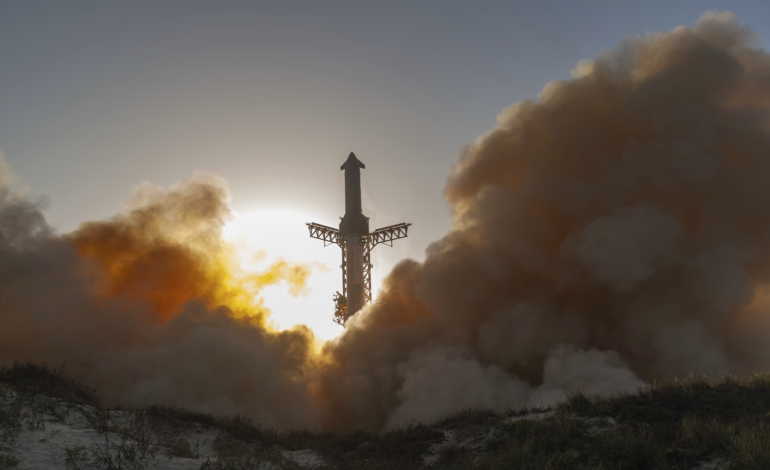SpaceX is intensifying its efforts to develop Starship, the company’s next-generation rocket, with the goal of launching an uncrewed mission to Mars as early as next year, the Wall Street Journal reports.
This push comes despite recent technical setbacks and amid broader efforts to support both commercial and government space missions.
The ambitious timeline reflects CEO Elon Musk’s long-held vision of making humanity a multiplanetary species. Starship—towering at nearly 400 feet—is central to that mission. Although still in an experimental phase, the vehicle is being positioned for potential deep-space travel, including a future voyage to the red planet.
Earlier this year, two Starship flight tests ended in explosions, prompting regulatory scrutiny and disruptions to regional air traffic. In response, SpaceX said it conducted extensive diagnostics and made modifications to improve performance and reliability. The company has scheduled its next test flight for Tuesday evening, marking the first launch attempt since those failures.
Shana Diez, an engineering executive at SpaceX, acknowledged the challenges in a recent post on X (formerly Twitter), calling 2025 “a rough start” for Starship. She emphasized that while progress may be incremental, the company remains committed to overcoming the engineering hurdles ahead.
To support the Starship initiative, SpaceX has begun reallocating personnel and resources. Employees previously assigned to other projects—such as the Dragon spacecraft—have been moved into Starship development roles, according to individuals familiar with the company’s operations. Infrastructure upgrades are also underway at SpaceX’s Texas launch facility, with similar investments planned in Florida.
These moves reflect the growing priority Starship holds within the company, especially as SpaceX faces pressure to deliver results for NASA and other partners. Notably, SpaceX is behind schedule on a version of Starship intended for a planned 2027 lunar mission under NASA’s Artemis program.
Beyond Mars, SpaceX is exploring military applications for Starship under a program called Starfall, aimed at using the vehicle to rapidly transport military equipment around the globe. The US Air Force has expressed interest in the concept, and SpaceX has filed plans to test a cargo variant of Starship capable of delivering over 66,000 pounds of material. The company has reportedly secured $149 million in funding for related development.
While the concept of using rockets for “point-to-point” travel—such as a hypothetical 39-minute trip from New York to Shanghai—has not been actively discussed in recent years, the idea remains part of SpaceX’s long-term vision for the vehicle.
Musk has stated publicly that he hopes to launch a Starship to Mars in 2026, potentially carrying Optimus, a humanoid robot being developed by Tesla. While the mission is expected to be uncrewed, it would mark a significant milestone in SpaceX’s deep-space ambitions.
A key challenge to reaching Mars involves in-orbit refueling, a process where multiple Starship tankers would replenish the main vehicle while it orbits Earth. This method has never been attempted at the scale required for interplanetary travel, and keeping fuel at cryogenic temperatures during the transfer adds another layer of complexity.
Timing is also a critical factor. Planetary alignment in 2026 will shorten the distance between Earth and Mars, making it a more favorable launch window for such a mission.
SpaceX’s Mars aspirations may align with evolving US space policy. A recent budget proposal from the White House calls for an additional $1 billion in funding for Mars-related efforts, suggesting a shift in national priorities. This could create new opportunities for collaboration between SpaceX and government agencies.








The latest news in your social feeds
Subscribe to our social media platforms to stay tuned